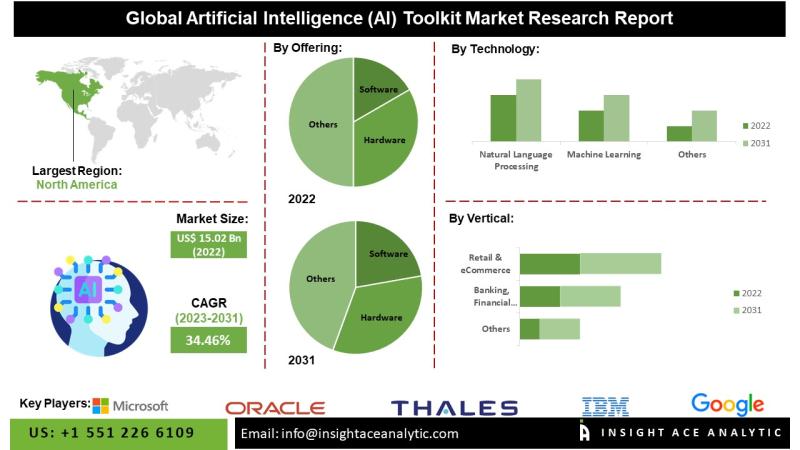Image used for representtaive purpose (iStock)
“/>Image used for representtaive purpose (iStock)As the Marketing Technology (MarTech) landscape evolves, businesses leverage cutting-edge tools to enhance their strategies and reach their target audiences more effectively. However, this evolution also brings new challenges, particularly in misinformation, contextual avoidance, deepfakes, and made-for-advertising websites. Coupled with the rise of artificial intelligence (AI), these elements reshape how advertisers operate in the digital space. Here’s an in-depth look at these trends and their implications for the industry.
The Role of Artificial Intelligence in MarTech
Artificial intelligence is transformative in MarTech, offering innovative solutions to some of the industry’s most pressing challenges. AI-powered tools enhance various aspects of digital advertising, from audience targeting and personalised content creation to performance optimisation and fraud detection.
In the context of misinformation and deepfakes, AI is being deployed to develop more sophisticated detection algorithms. These algorithms can analyse vast amounts of data to identify patterns and anomalies indicative of fake content, helping advertisers and platforms mitigate the spread of false information.
AI is also pivotal in addressing the challenge posed by made-for-advertising websites. By leveraging machine learning models, advertisers can better understand user behaviour and preferences so the ads are served on high-quality, relevant sites. This not only maximises the effectiveness of ad spend but also protects brand integrity.
Moreover, AI-driven analytics and insights empower advertisers to optimise their campaigns in real-time. Predictive analytics can forecast trends and consumer behaviour, enabling more strategic decision-making and efficient resource allocation. Personalised recommendations generated by AI can enhance user engagement and drive higher conversion rates.
The Evolution and Challenges of Misinformation
Misinformation is not a new challenge for advertisers, but its scale and impact have grown exponentially with the proliferation of digital media. The ability to disseminate false information quickly and widely poses significant brand risks. Misleading content can erode consumer trust, damage brand reputation, and lead to financial losses.
One particularly concerning development in this area is the rise of deepfakes. These are highly realistic but artificially created images, videos, or audio recordings that can be used to deceive viewers. In digital advertising, deepfakes can create false endorsements, manipulate political narratives, or spread harmful brand misinformation. The sophistication of deepfake technology makes it increasingly difficult to distinguish between genuine and fabricated content, thereby amplifying the challenge for advertisers to maintain credibility and trustworthiness.
To combat misinformation and deepfakes, companies must invest in advanced measurement and optimisation tools and collaborate with independent third-party fact-checkers to ensure that the content associated with their brands remains authentic and reliable.
Contextual Avoidance Technology: Enhancing Brand Safety
Contextual avoidance technology is crucial for advancing brand safety in digital advertising. This technology leverages advanced algorithms and machine learning to analyse the context in which ads are placed so they do not appear alongside harmful or inappropriate content. By examining the surrounding text, images, and videos, contextual avoidance tools can prevent ads from being displayed on web pages that contain controversial, misleading, or damaging material. This is particularly important in combating the spread of misinformation, so brands maintain their integrity and trustworthiness.
Today, we have ad verification technology backed by artificial intelligence (AI)/ machine learning (ML), that deconstructs each frame of multimedia to identify critical elements. It classifies text, audio, images, and video into numerous contextual categories. Such software is also programmed to interpret semantics and sentiment to identify the most cost-effective path to quality impressions.
Advertisers can thus protect their reputation while optimising ad spend by reaching high-quality, relevant environments. As digital advertising becomes more sophisticated, adopting contextual avoidance technology is essential for brands looking to navigate the complex media landscape and deliver their messages safely and effectively.
The Rise of Made-for-Advertising (MFA) Websites
Another trend reshaping the MarTech landscape is the emergence of MFA websites. These sites are designed to generate ad revenue by attracting high traffic volumes through sensationalist or low-quality content. While they may offer advertisers large audiences, the engagement is often superficial and does not translate into meaningful interactions or conversions.
The prevalence of MFA websites can lead to wasted ad spend and damage to brand reputation if ads appear alongside inappropriate or misleading content. To address this issue, advertisers are increasingly turning to advanced programmatic solutions that utilise AI and ML to ensure ad placements are contextually relevant and brand-safe.
Navigating the Future of MarTech
The rapid advancements in MarTech present both opportunities and challenges for advertisers. As the industry grapples with the complexities of misinformation, deepfakes, and MFA websites, the integration of AI offers promising solutions to enhance digital advertising effectiveness and integrity.
However, advertisers must remain proactive and vigilant. Continuous investment in cutting-edge technologies, robust measurement and optimisation, and responsible advertising practices will be key to navigating this dynamic landscape. By leveraging the power of AI and staying ahead of emerging trends, advertisers can build trust, drive meaningful engagement, and achieve sustainable growth in the ever-evolving world of digital media.
The future of mobile advertising is all about relevance. Consumers see lots of ads daily, and they’re more likely to engage with those who speak directly to their needs and interests. This aligns with a 2023 IAB report predicting that privacy regulations will push mobile ads toward contextual relevance, focusing on user intent for targeted advertising. This is exactly where mobile OEMs hold a potential edge.
- Published On Jul 12, 2024 at 08:04 AM IST
Join the community of 2M+ industry professionals
Subscribe to our newsletter to get latest insights & analysis.
Download ETBrandEquity App
- Get Realtime updates
- Save your favourite articles
![]()
![]()
Scan to download App





